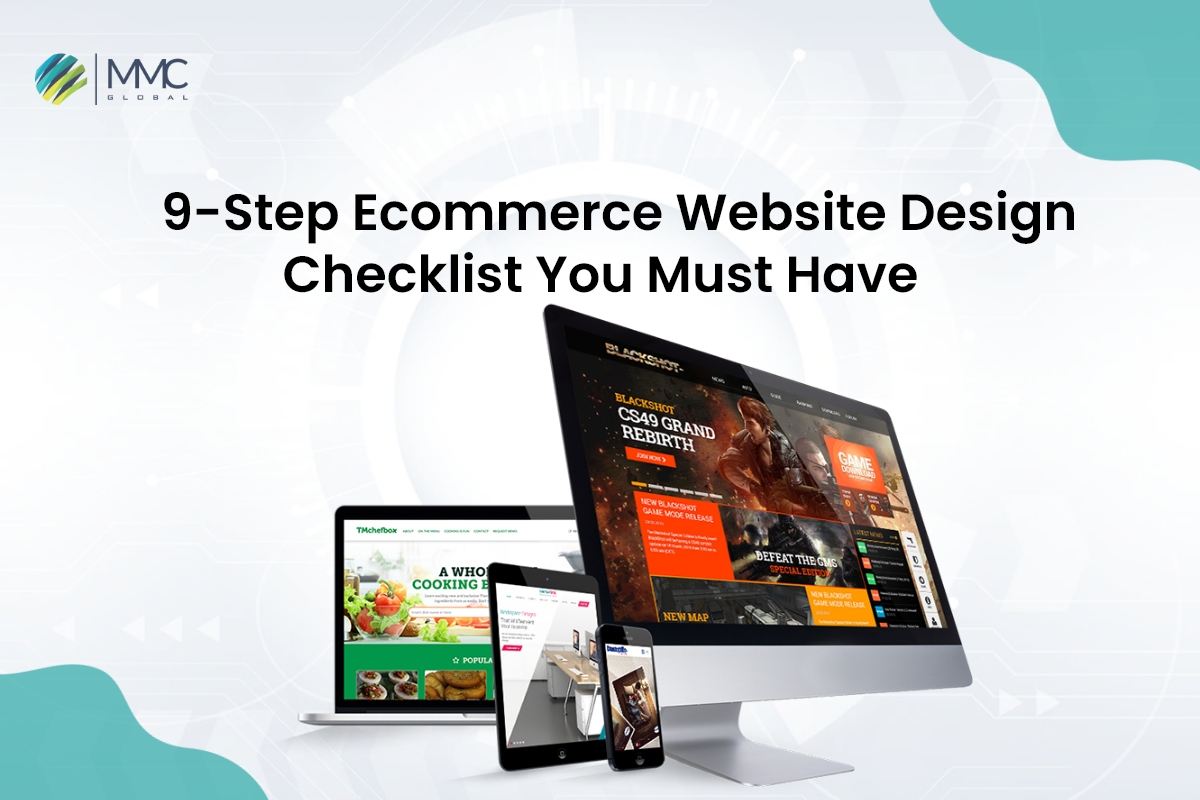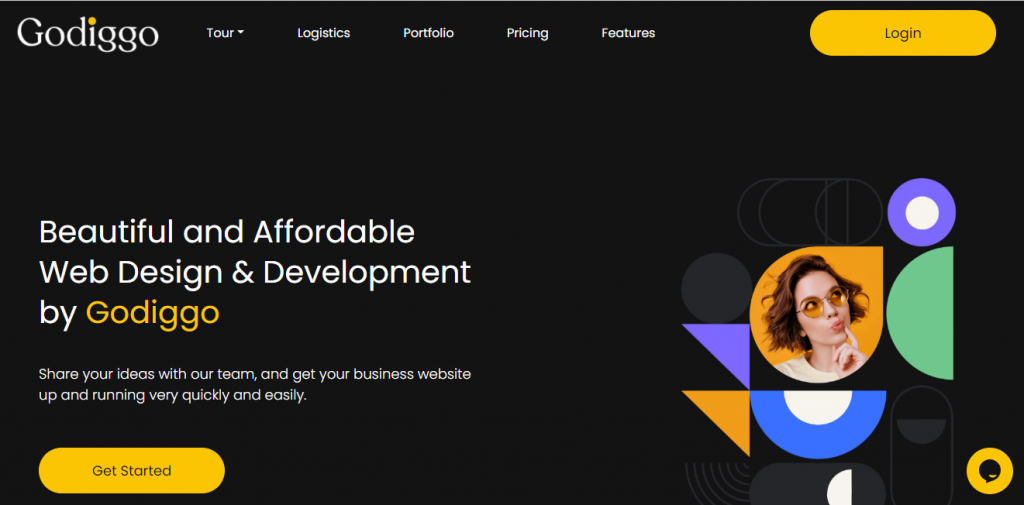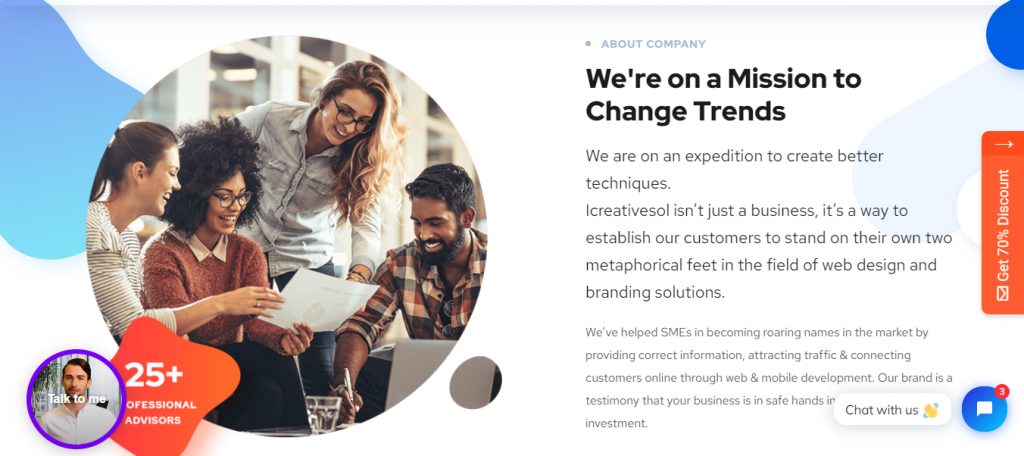7-Step Ecommerce Website Design Checklist You Must Have


11.50% of customers believe that eCommerce website design is essential to an online business’s overall brand. (Top Design Firms, 2021)
In a survey of 500 consumers, half said that website design is important to a business’s overall brand. That suggests companies should prioritize website design (or a redesign) to meet consumers’ expectations and strengthen their brand identity.
Regardless of what type of eCommerce business you are running, you must need an eCommerce platform that helps your audience find you in the market. To show your presence in the online marketplace, you just need to design your eCommerce website.
It is a warning for many retailers that if your mind is still not ready to opt for this option, you will face a hurdle to achieving your revenue goal.
Or, in case you have built your eCommerce website design but still do not get what you expect, it is also an eye-raising moment for you. Anyhow, we are here to sort it out. Although many leading businesses (eBay, Alibaba, Amazon) have set the example of successful eCommerce marketing, if you are a beginner and it’s your startup, MMCGBL gives you a supportive hand.
We, at MMCGBL, kick-start the startups by providing the most suitable IT and software solutions for your eCommerce website design. Our website developers share different ideas and build trendy strategies that leverage your eCommerce business. From consultation, website design and development, mobile application, AI-based solutions, and much more, we help you in every step.
Why Is Ecommerce Website Design Important?
To boom in the market, you need to attract, engage, and retain your customers. And for this purpose, your eCommerce website design needs your attention. As it is your prospects’ first impression, there should be a reason for them to stay there.
The below stat of web design truly depicts the importance of good eCommerce website design.
53.8% of web designers cite “not being responsive on all devices” as a top reason for redesigning a website. (GoodFirms)
Your website helps you entertain your prospects, showcase your product/services, be responsive to any end-user action, and retarget your previous customers. It must support every touchpoint of the users because every user has their way of getting connected with you. Your website design must be responsive no matter how your prospects approach you, maybe from different devices or platforms. Ultimately, it will deliver a greater customer experience that drives your prospect into your potential customers.
However, the question is how we can define a good eCommerce website design or what should include making it more appealing.
I want you to keep this 7-step checklist of eCommerce website design so you can encounter the best eCommerce website design to capture your audience. Let’s create the checklist!
7-step checklist of eCommerce website design
In 2020, the total number of web developers and designers in the US was around 178,900. By 2030, this number is projected to reach over 205,000. (Statista, 2021)
This emerging number of website designers
Here is the roadmap for your eCommerce website design that every web designer should have.
Build an Attractive Website Home Page
Here we start with your website’s most visiting page, i.e., the homepage. Consider it as your online storefront where prospects get engaged with your brand. It would help if you were very careful in its content formatting, layouts, theme, color, and even for a single CTA. Maybe it seems a minor element, but it matters a lot. Your website design must be customer-centric, and it must be like your website communicates appropriately with your customers.
Must-have tips:
- A well-written and organized notion that delivers the right message about your product and services. In short, you need to clear your brand message by telling what problem you are solving and what solution you have.
- Easy to find products and categories in the navigation bar or side menu. You don’t need to hide things in the layers.
- You do not need to put too many calls to action. It makes users confused about which CTA they need to click.
- Don’t forget to embed product recommendations and best-selling products. Make a separate section where you can feature the latest or in-demand products.
- Opt-ins, pop-ups, and push notifications are some of the best ideas to retain your visitor or prospects.
- Redirect your homepage with your main categories so visitors can find related searches at their fingertips.

Category Pages To Access The Right Product
Category pages are the bridge between the homepage to product pages that separate from the pile of other different products. While designing your eCommerce website, a category page encourages users to redirect to their needs.
It helps manage your products and services with related categories to facilitate your customers. For example, you provide application development services for mobile or web apps if a random visitor comes to your website for iOS mobile application services. What type of category can you create? Of course, you need to create a mobile app development category for its better reach.
Other than that, category pages help Google find your website individually with the help of SEO. The Google search recommends your category page directly to the searchers and drives them to your website. It ultimately increases website traffic and conversions.
Must-have tips:
- Your category page must have a short URL and optimize with keywords to get better search results.
- While creating category pages, you need to add SEO-friendly descriptive product details.
- Adding different filters, such as sorting out colors, specifications, prices, etc., can give users quick access by filtering out related products.
- Also, high-resolution pictures of your products can help to attract your visitor. Don’t hesitate to showcase your previous successful projects if you give services.
Dedicated Individual Product Pages
In eCommerce website design, thousands of web pages interlink with each other. You cannot say 20 pages are enough to sell your eCommerce products. Every individual product has a further single page where users find overall information regarding a product.
The more streamlined your listing, the higher your chances of getting conversions. Mind it, providing flawless user experience drives more sales, and if you are lacking in it, you have to face a rising spike of bouncing rate.
Must-have tips:
- High-quality product images and other media elements such as product demos, short videos, etc.
- Product pages must include product specs, add-ons, packages, key features, etc.
- Give multiple options that help retain visitors, e.gButtons like save for later, Add to cart, add to wishlist, etc.
- Embed feedback and customer reviews are the best option to convenience customers and help them make quick decisions.
- Use the strategy of upselling and cross-selling by feature-related products and services recommendations.
Check Out Page With Multiple Payment Gateways
The checkout page is the most important page while eCommerce website design. Although the user at the endpoint of the purchase still has a chance to abandon the cart. The reasons behind this are so many, such as delivery charges being too high, asking to create an account, complicated checkout process, page errors occurring, etc.
Additionally, it destroys customer experience, and their expectations go down. It is essential to look at your website design to provide easy and quick checkout. Suppose anything additional you want to convey in the checkout process must display clearly. You can also emphasize your offerings such as free delivery, No hidden charges, or tax applied. It gives a good impact, and customers love to avail quickly.
Must-have tips:
- While starting your eCommerce website design, you need to put in multi-payment gateways. Since not all payment methods are supported globally, you have to put multiple options in front of your customers. Moreover, it reduces bounce rate and cart abandoned rate simultaneously.
- Don’t make login compulsory because people are too lazy to switch to the next window and create an account for purchasing. You can allow “guest Login” because it requires minimum fields that are easy and quick for the users. Also, you can ask for registration after completing checkouts and save their information.
- List down all possible payment methods internationally and locally, such as PayPal, Apple pay, debit card, credit card)
- Clearly saying about delivery charges, tax and whatever the actual price. You can also offer a free shipping pop-up to motivate customers to purchase the product of free DC.
- Show confirmation message regarding placing an order, subscription, and whatever the customer takes action. It is compulsory to verify their checkouts and confirm the orders.
About Us Page For Well-Versed Information
Tell about yourself, your brand values, objectives, and goals to show the credibility of your business. The About us page enhances your end-user trust by seeing your purpose to serve them better. In this section, your words matter a lot.
Setting your brand values increases the authorization and verification of your product. Particularly, if you serve in a B2B marketplace, you have to design your “About us page” more carefully.
Must-have tips:
- Tell yourself how, when, and why you are in the market. Share your product/service story, the problem you wanted to solve, and its idea. Also, speak a little loud about the solution you are providing.
- Introduce your team and add the pictures, so the visitor interacts with them and builds trust as you are the authentic sellers.
- Present the company value and appreciate your presence in the online marketplace. Explain how you operate and your delivery areas, region, or country.
- Also, mention your social profiles so people can interact with you on all your marketing touchpoints.
- Keep content short but up to the standard. Using keywords is helpful to optimize the content.

On-Site Search Engine While Website Design
On-site search results bring a transformation for eCommerce websites. If your eCommerce website design has robust SEO optimization, it helps in long-term visibility in Google searches.
Any business’s objective is to make the client journey as easy and streamlined as feasible. An on-site search engine speeds up the customer’s trip by enabling them to locate their results rapidly and effortlessly.
Must-have tip:
- Make it easier to find the search bar as soon as possible.
- Adding auto-complete features also helps to increase the user search rate.
- Give the results for misspelled words. Typos are normal, but if your website design is not able to discover the right product, you may lose prospects.
- Deliver a personalized touch by analyzing analytics in your search result.
- Businesses should keep the mobile experience in mind when developing an on-site search engine.
Legal Condition For Ecommerce Websites
Before creating an eCommerce website, be sure it is legally obliging with any applicable data privacy rules. Recent legislation, such as the GDPR in Europe and the CCPA in California, directly influences data gathering and utilization, especially for bigger firms. If a website uses cookies, it must guarantee that users’ consent is obtained.
GDPR and CCPA have already impacted eCommerce websites, with overall eCommerce revenue decreasing by 8.3% the year after GDPR implementation.
For legal conditions, you must need:
- Privacy policy
- Terms and condition
- Disclaimers
Let’s Wrap Up
Ecommerce website design encourages users to gather leads, increase engagement, and improve user experience throughout the designing journey. You have to be strategic to get the right direction in the online market hemisphere. Moreover, the increasing number of online markets encourages developers to learn more and do great.
If you are finding a team of developers who will help you build your eCommerce website, then it’s time to talk to us. You will never regret it!



